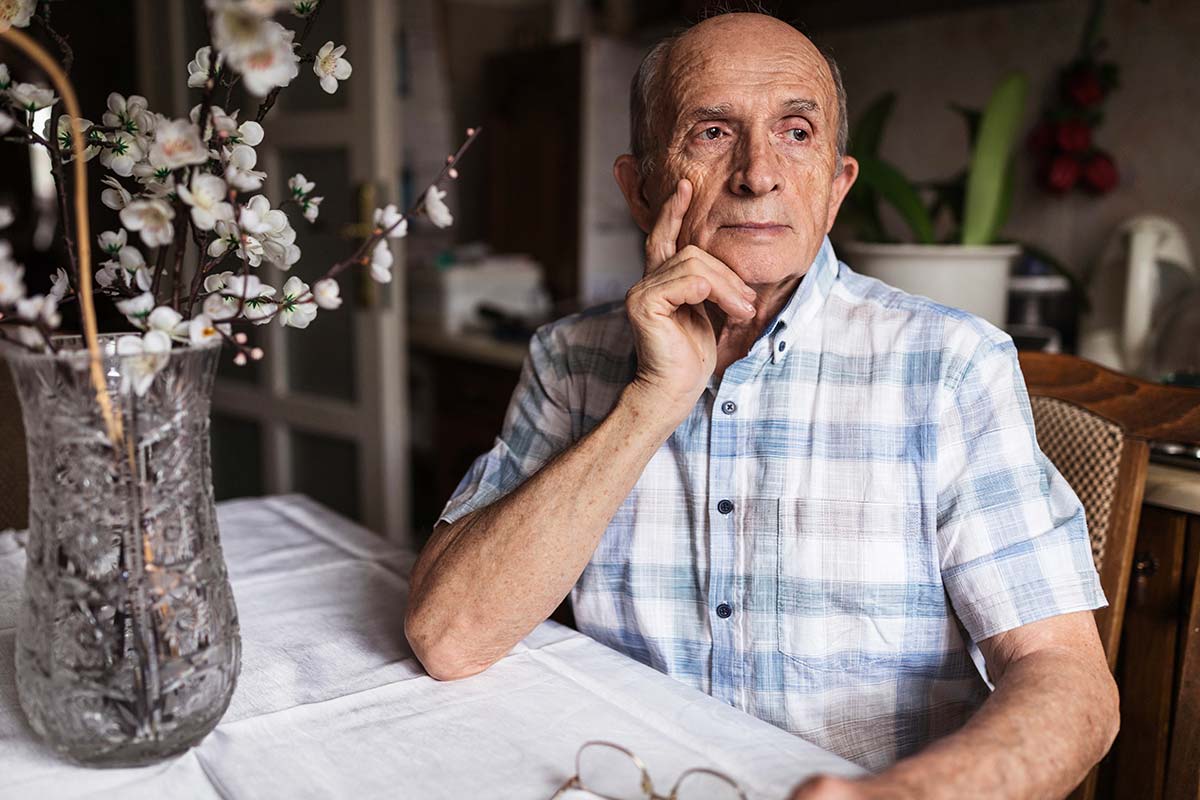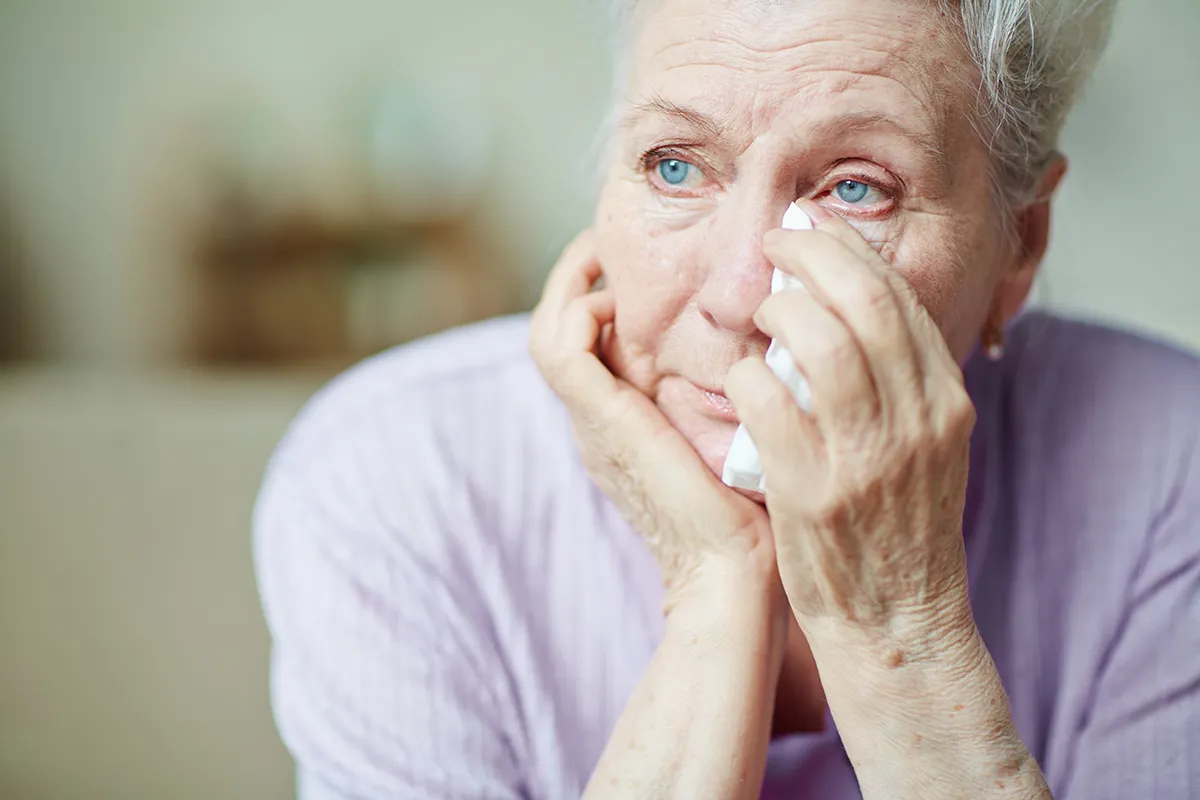Elder abuse can come in many different forms — it’s not just one type of action or inaction. The National Council on Aging reports that about 1 in 10 Americans aged 60 or older have suffered from at least one form of elder abuse.
The National Center on Elder Abuse (NCEA) has identified these seven different types of elder abuse:
- Neglect
- Physical abuse
- Sexual abuse
- Abandonment
- Emotional or psychological abuse
- Financial abuse
- Self-neglect
Physical Elder Abuse
Physical elder abuse involves intentionally using force against an elderly person, such as hitting, shoving, kicking, or restraining them.
Signs of physical elder abuse include:
- Cuts or scrapes
- Broken bones
- Bruises
- Burns
- Dislocated joints
- Head injuries
- Sprains
Additional signs of possible physical abuse:
- Repeated hospitalizations for similar injuries
- Delayed medical care
- Inadequate explanations from caregivers
- Visits to different emergency rooms to avoid suspicion
Elder Sexual Abuse
Elder sexual abuse involves forced or non-consensual sexual contact with an older adult, including those with dementia, Alzheimer’s, or other cognitive disabilities who are unable to give consent.
Warning signs of elder sexual abuse include:
- Bleeding from the anus or genitals
- Bruised genitals or inner thighs
- New sexually transmitted diseases or infections (STDs/STIs)
- Pain in the anus or genitals
- Pelvic injuries
- Problems walking or sitting
Elders can be sexually abused by anyone, including nursing home staff, residents, in-home caretakers, friends, and family members.
Elder Neglect and Self-Neglect
Elder neglect occurs when a caregiver fails to protect an older adult from harm, leading to serious injuries or illnesses. This neglect is not accidental but stems from carelessness or disregard for the elder’s well-being.
Elderly adults can also be vulnerable to self-neglect, a form of elder abuse that occurs when someone is unable to provide themselves with basic needs, such as adequate food, water, clothing, hygiene, medical care, or safety.
Signs of elder neglect or self-neglect include:
- Dehydration and/or malnutrition
- Inadequate or unclean clothing
- Lack of food in the home or care facility
- Missing needed medical aids
- Poor personal hygiene
- Unclean or unsafe living conditions
- Unpaid bills
- Untreated infections or injuries
- Weight loss
Neglect can cause severe health issues like bedsores, sepsis, and even death. It is particularly prevalent in understaffed assisted living facilities.
Elder Financial Abuse
Elder financial abuse or financial exploitation is a type of abuse that separates an elderly person from their money, property, or assets. Elder financial abuse generally comes in two forms: elder scams, where a stranger attempts to access and separate an older adult from their financial assets, and elder theft, which involves the theft of an older adult’s assets or property by someone they know and trust. The U.S. Department of Justice warns to watch out for the following signs of elder financial exploitation.
Signs of elder financial abuse or exploitation include:
- Sudden changes in bank accounts or banking practices, including unexplained withdrawal of large sums
- The inclusion of additional names on an older adult’s bank signature card
- Unauthorized withdrawal of the older adult’s funds using their ATM card
- Abrupt changes in a will or other financial documents
- Unexplained disappearance of funds or valuable possessions
- Provision of substandard care or bills left unpaid despite the availability of adequate financial resources
- Discovery of a forged signature for financial transactions or for the titles of the older adult’s possessions
- The sudden appearance of previously uninvolved relatives claiming their rights to an older adult’s property or possessions
- Unexplained sudden transfer of assets to a family member or someone outside the family
- The provision of services that are not necessary
- An older adult’s report of financial exploitation
- Unexplained credit card charges
Elder Abandonment
Elder abandonment, often occurring alongside neglect, involves a caregiver intentionally leaving an elderly person without proper arrangements. This abandonment can happen when a caregiver leaves the elder at a hospital, nursing home, or another facility without a formal agreement or with relatives who have not consented to provide care.
Signs that someone might be a victim of elder abandonment include:
- Being alone and appearing confused, lost, or scared
- Exhibiting poor hygiene
- Appearing frail, malnourished, or dehydrated
Elder abandonment can cause significant confusion and distress, severely impacting the physical and emotional well-being of the elderly individual.
Emotional Elder Abuse
Emotional elder abuse involves intentional actions that cause mental pain, fear, or distress in an elderly person. This type of abuse can manifest in various ways. For instance, caregivers might belittle elders, call them names, or make threats. Additionally, they may isolate the elderly from loved ones or restrict access to resources.
Indicators of emotional and psychological abuse in elders include:
- Appearing depressed, withdrawn, or scared
- Avoiding eye contact
- Changes in eating or sleeping patterns
- Isolation from friends and family
- Low self-esteem
- Mood swings
- Sudden changes in behavior or personality
Emotional and psychological abuse often accompanies other forms of elder abuse, such as physical harm or neglect. In these cases, it is important to look at the overall health of an individual if they are showing signs of emotional abuse.
What to Do If You Suspect Elder Abuse
Elder abuse can be committed by anyone. According to the National Council on Aging (NCOA), an analysis of calls to the National Center on Elder Abuse found 47% of incidents were committed by family members, 13% were committed by medical (non-family) caregivers, and 6.7% did not know their abuser.
If You Suspect Elder Abuse
- Call 911 in an emergency: If you believe an elder is in immediate danger, contact the police or call 911.
- Check-in with your loved one: Elders may be hesitant or scared to discuss their abuse. Gentle prompting may encourage them to confide in you.
- Keep in regular contact with your loved one: Socially isolated elders are at a higher risk of abuse. Regular contact can help prevent this.
- Use available resources: Report abuse or neglect to local Adult Protective Services (APS), a nursing home ombudsman, or the police.
- Educate yourself: Learn more about elder abuse prevention through our blogs:



